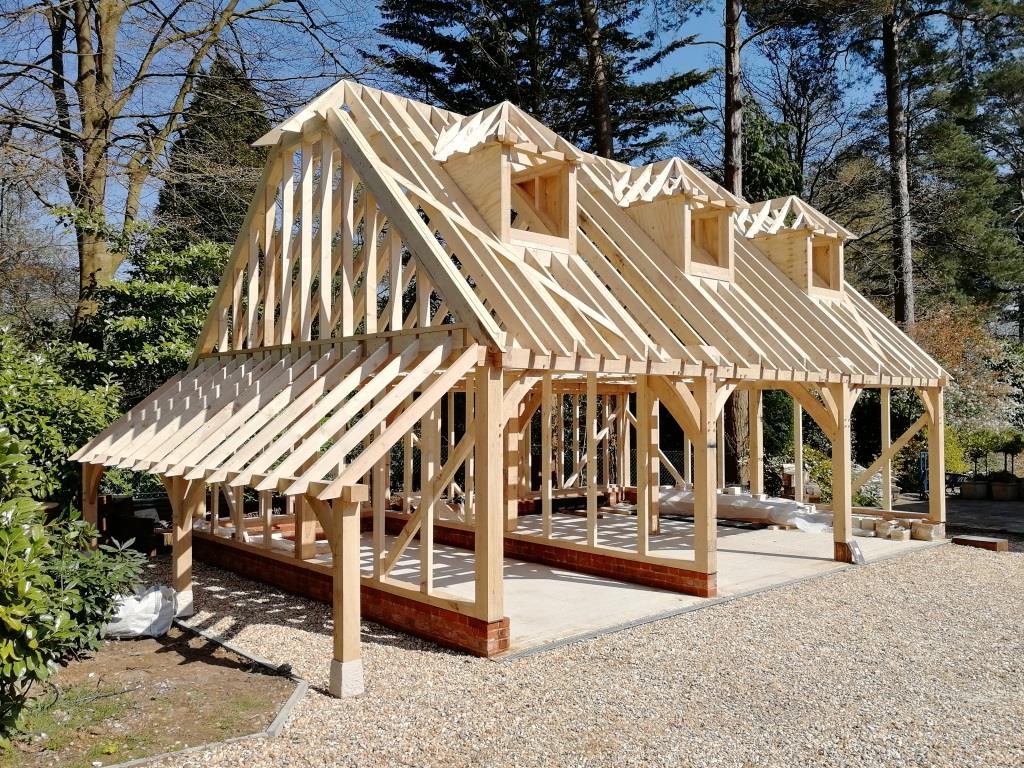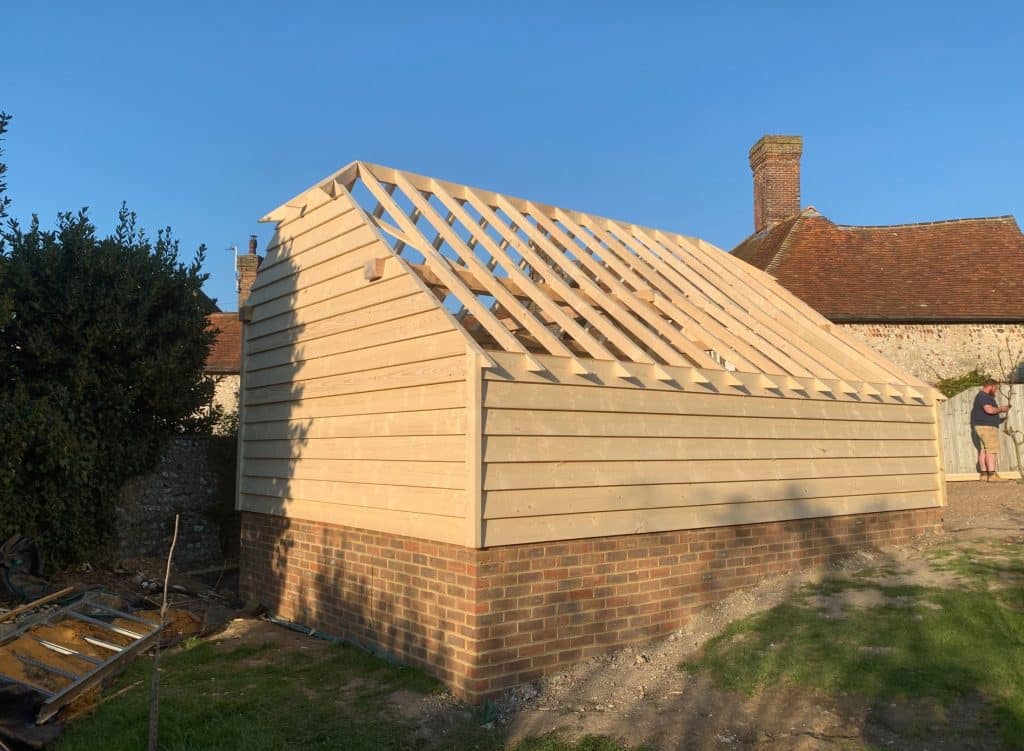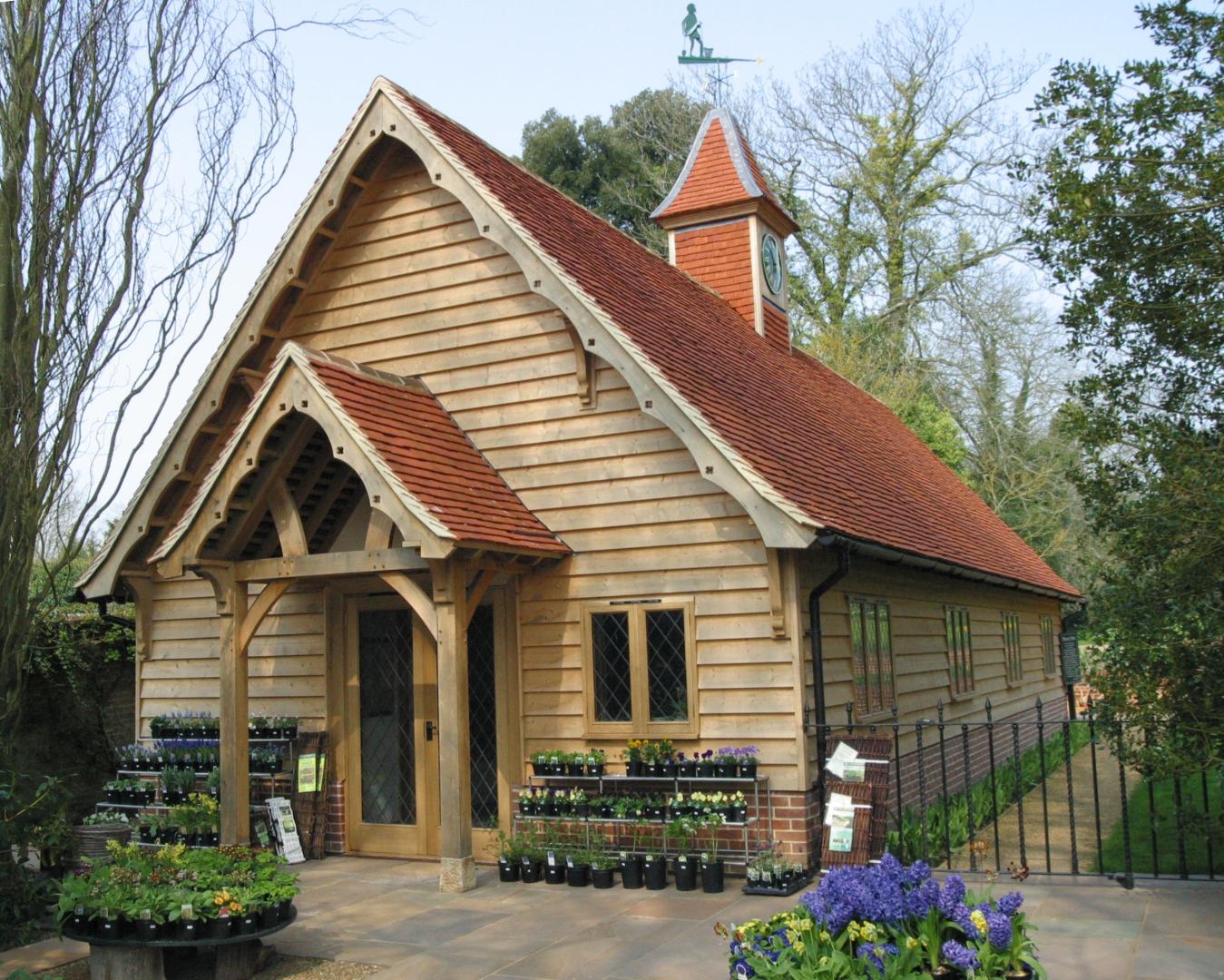OAK TIMBER FRAME VS SOFTWOOD TIMBER FRAME
When planning a new build or making changes to existing ones, it is inevitable to be faced with the question of which type of timber frame should be used in construction. Will it be an oak timber frame or a softwood timber frame.
Whilst both frames are frequently used in combination within the same structure, they both have features that make them ideal for certain aspects of timber frame homes.
Similarities

Timber frame construction techniques are the same regardless of which material is used: softwood or hardwood. A masonry or concrete plinth foundation barrier is always going to be needed between the ground below and the timber frame.
The frame will then be built on top and wrapped in a waterproof membrane when finished. This is subsequently is covered with the appropriate cladding finish, such as masonry, brick, render, metal, or wood.
Individual SIPs or other airtight insulating materials are used to fill holes in exposed wood frames before rendering. The manufacturer frequently constructs the frame pieces off-site and ships them ready for assembly.
After these timber frame kits have been quickly constructed and weatherproofed, inside work may commence. Timber frames offer superior insulation compared to steel or other synthetics and do not require a damp course. Additionally, due to its natural origins, manufacturing wood has a minimal environmental impact. Its use produces no toxic chemicals or air pollution, and appropriate forestry management ensures sustainability.
Differences
1. Cost
Hardwoods are slow-growing deciduous trees, that take longer to mature and reach the requisite size for construction timbers. The slow growth lends itself to higher timber density and subsequently, strength. As these trees grow at a much slower rate, they are less commonly available hence more expensive.
Softwoods, on the other hand, are fast-growing conifers with a less dense structure, which makes them easier to manipulate. Because they grow fast, they are easily available. They are less expensive as a result, but they lack the toughness and endurance of hardwoods.
As a result, they will need to be replaced sooner, and many consumers would prefer to pay a higher price for hardwoods because of their longer lifespan.
2. Water resistance
Oak is extremely resistant to water absorption due to its thick structure and strong tannin content. Because it does not require weatherproofing, it is ideal for exposed frames and outdoor structures.
Oak has been used for centuries as a preferred building material. One of the reasons is that it is durable in the damp climate of the United Kingdom. If, however, softwood is used for outdoor applications, it must be treated at regular intervals to withstand water and weather damage. Regular treatment will cost time and money, and all the extra care will not extend the service life of such timber.
3. Pesticide Resistance
The resistance of oak to pest infestation and fungal attack is well known. The tannins in the wood make it undesirable to many pests and, in many cases, actually poisonous to them. While extended moist exposure can cause dry rot damage, it is uncommon and significantly less prevalent than in softwoods.
While many softwoods used in timber frames are treated with biocides to reduce pest damage, they are still more vulnerable than oak.
4. Appearance
Oak wood comes in a number of hues with a very unique grain pattern. The reason behind the high number of hues and different looks is the high number of varieties growing across different countries.
This high number of hues makes oak a desirable choice for interiors. When used outside, oak has a silvered, worn appearance that blends seamlessly with natural elements. Adding oak features, such as an extension or stylish porch, to an otherwise basic home can improve its appearance. The original hue can be preserved by using a clear wood preservative and UV protection oil once a year.
Obviously, if the intention is to paint or stain the interior woodwork, softwoods may be a less expensive option because the wood itself will be hidden. Softwoods can also be used for a hidden primary structural structure and are accented with oak in the living areas.
This can drastically reduce the cost while still maintaining the visual effect of an oak frame and beams within the property. To save money, softwoods might be used for hidden beams or floor joists within a stronger oak frame.
5. Shrinkage
Oak timber shrinks radially across the grain as it matures and dries, resulting in splits along the timber. Cracks do not cross the grain, however, therefore no harm or damaging effect is caused on the strength of the timbers.
Competent designers will incorporate this into the design so that the structural integrity of the structure is not compromised. Tenon and mortice joints in a wood frame are slightly offset, with substantial kiln-dried oak pegs connecting them.
As the oak wood shrinks, the joints of the frame come closer together, creating a stronger and more secure construction. This gives the frame an aged and rustic aesthetic that many people find attractive. If a cleaner, flatter look is preferred, however, while still taking advantage of the strength of oak, softwood can be used for interior finishing.


